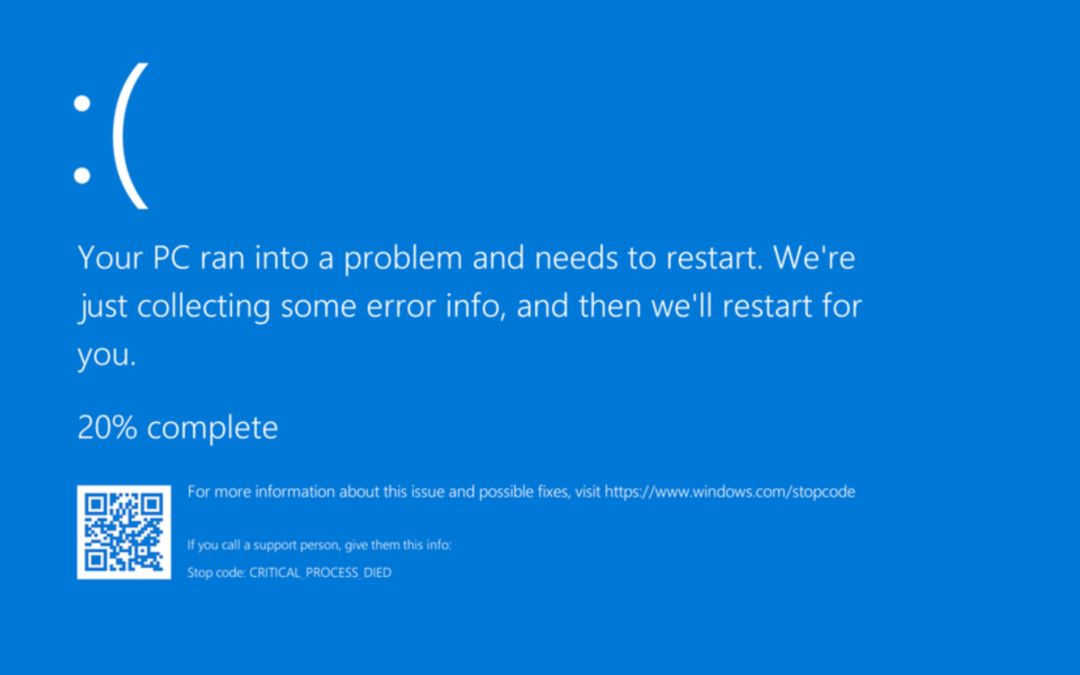What does the BSOD Error (Blue Screen Of Death) mean? The Windows blue screen of Death – BSOD – is an error screen that displays when the Windows Functional system encounters an error and crashes.
Although the BSOD indicates that Windows has reached a critical process died Windows and can no longer run carefully, it’s often caused by relatively minor issues that can be easily fixed by the BSOD error solution.
From Windows, the BSOD comes with specific messages describing the problem, as well as a Windows “stop code memory Management” — either in text — that you can look up on Windows Support for a more complete explanation of the BSOD error. The blue screen Windows may also display 10 and 11 windows a QR code you can scan to find out more about the error and crash.
We’ll take a look at some of the main BSOD errors and give you a rundown of the most common error codes and what they mean. Or, jump ahead to find out how to stop a blue screen of death no matter what BSOD error code you have.
What errors and problems are the blue screen of death?
The blue window screen can be erred by any problem that causes Windows to stop running securely. The Blue Screen of Death can be generated by software problems, such as incompatible driver updates, or hardware problems, like a hard drive that needs formatting, clock watchdog timeout, or overheating caused by overclocking your CPU.
The Blue Screen of Death (BSOD) is usually a result of either hardware communication problems or corrupted files error, but the precise cause can be diagnosed via the Windows error stop code memory management. Most BSOD errors generally aren’t too concerning, unless crashes happen repeatedly. Whatever causes a BSOD, it can usually be avoided with regular tune-ups to help keep your PC running securely and easily.
If your laptop and desktop have been performing slowly, cleaning it up by removing useless files and getting rid of useless apps can help speed it up.
How to Resolve the Windows blue screen of death (BSOD error solution):
Resolving the Windows blue screen of death (BSOD) error can be daunting, but here are some steps you can take to troubleshoot and fix the issue:
1. Restart Your Computer PC that showed the BSOD error:
Sometimes, a simple restart can resolve the issue. If the Blue screen of death (BSOD) appears only once, it might not be a recurring problem.
2. Update Windows:
Ensure that your functional system is up to date. Microsoft often releases patches and updates to solve bugs and security vulnerabilities that could cause BSOD errors.
3. Recently Installed Software or Hardware Uninstall :
If the Blue screen of death started occurring after installing new software or hardware, try uninstalling or removing them to see if that resolves the issue.
4. Run Windows blue screen Memory Management Tool:
Blue Screen of Death – BSOD errors can sometimes be caused by faulty RAM. Use the built-in Windows Memory Diagnostic tool to check for memory management problems.
5. Check Disk for Errors:
Use the built-in Windows Disk Check tool to scan your hard drive for errors and fix any issues it finds.
6. System Service Exception Restore:
If the BSOD started occurring recently and you can pinpoint when it began, you can use System Service Exception Restore to revert your system to a previous state before the issue started.
7. Check for Malware:
Some types of malware can cause BSOD errors. Run a full system scan with your antivirus software to check for and remove any malware infections.
8. Perform a Clean Windows Installation:
If none of the above steps resolve the errors, you may need to perform a clean installation of Windows. Before proceeding with this step. Ensure that you have a backup of all of your crucial files.
Conclusion
If you’re still experiencing Windows Blue Screen of Death – BSOD errors after trying these steps, there may be a hardware issue with your computer. Certainly! If you need to reach out for assistance feel free to contact us through our chat box.


Trackbacks/Pingbacks